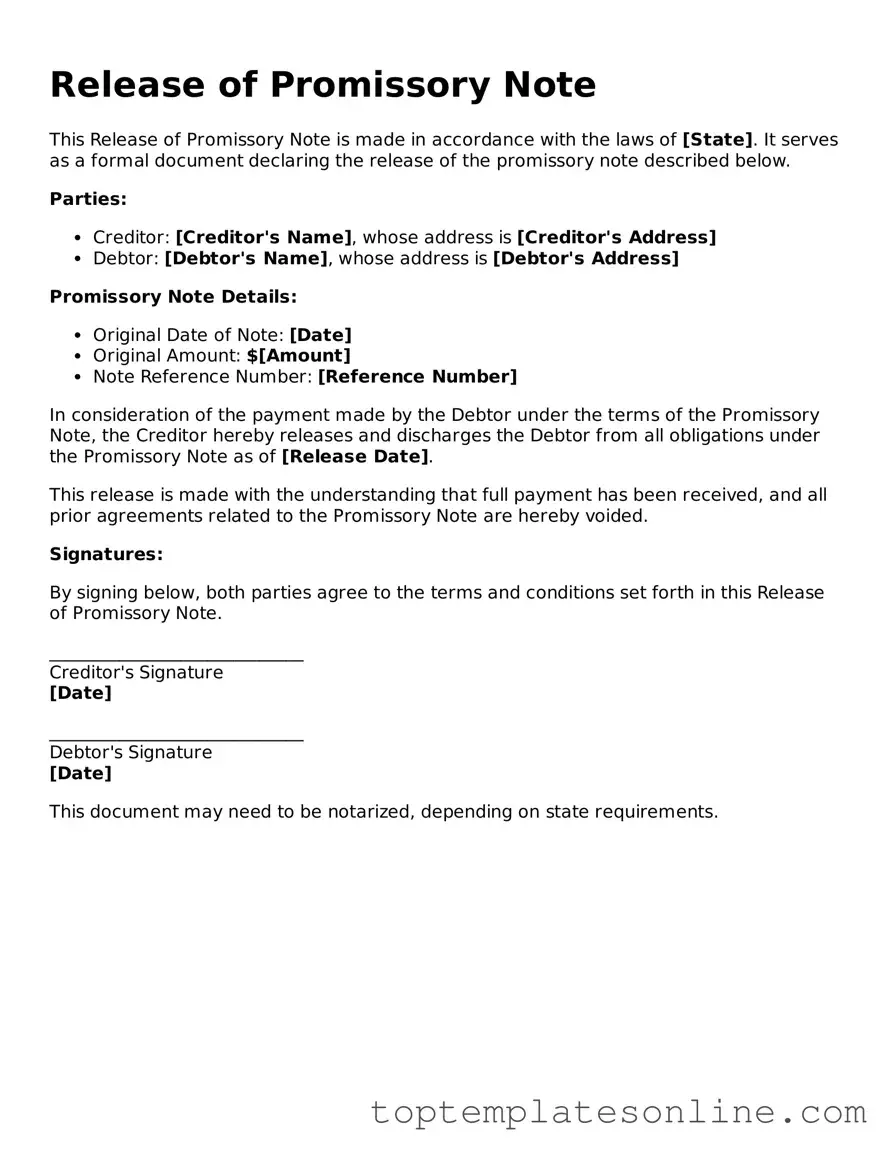Attorney-Approved Release of Promissory Note Form
A Release of Promissory Note form is a legal document that formally acknowledges the repayment of a loan and cancels the borrower's obligation to repay the remaining balance. This form serves as proof that the debt has been settled, providing peace of mind to both the lender and the borrower. Understanding the importance of this document can help individuals navigate their financial agreements with clarity and confidence.
Customize Release of Promissory Note Here
